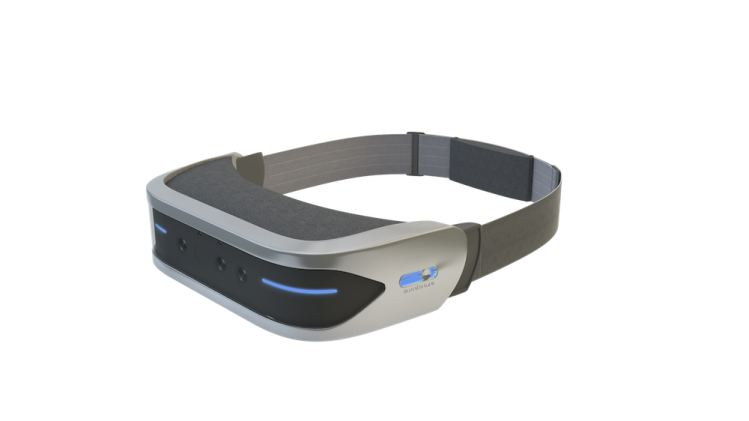Brain power in use
A brain-controlled demonstration had me playing against an opponent, both of us using alternating states of calm and tension to either defend an orb base or attack the opponent’s. We both wore headbands equipped with forehead sensors that let the software read our mental state. Relaxing the mind increased a force field around the orb to protect it. Stress had a reverse tug-of-war style attack pushing closer toward the opponent’s orb. This demonstration did not feature virtual reality elements — the demo isn’t ready for prime time yet — but it did serve as a good example of how mind states could be made into game elements.
It was interesting to be fully engaged in a gaming experience without the need for controllers, let alone movement. Aside from the squinted eyes and forced frowns I ended up doing to transition from relaxed to tense states, I sat perfectly still while playing — a first for me. This sort of sending an action to a game came so easy and worked so well that this simple experience was considerably more entertaining than it would have been as a controller-based game.
A hands-off demonstration of a prototype of the VR rig had one of MindMaze’s staff members holding out his hand in front of his face. The headset’s front cameras sent an HD image to a screen showing his hand and the room around it, with augmented reality fire coming from his fingertips. Brain sensors on the prototype’s headband let the user change his mental state to change the color of the fire from red to blue. Turning around in place, the environment on the screen transitioned from augmented reality to virtual reality. The user’s hand was still there, but it was represented graphically in a futuristic space. Changing orientation let the user change between the AR and VR environments freely.
The future of this futuristic tech
MindMaze wants to get MindLeap out and into the open so that developers can take over with the hopes that t the addition of mind control to virtual reality will open up a new spectrum. Tadi feels that this was the eventual next step.
“If you forecast the way the goggle manufacturers are going, you want finger-tracking, you want gesture recognition, and you want to see your body,” he said “And now there’s the whole neural layer where people who are interested in creating new experiences will say, ah, there’s something cool to do there.
“We had to make the jump to make it more game friendly. I think we’ve enabled that now. It’s more usuable and more fun, too.”
Tadi says that MindLeap would be the first time that virtual reality, augmented reality, 3D motion capture, and neuroscience will come together for gaming purposes.
“You see the capability right now. The next thing we want to do is partner with content creators and game devs. We’ll offer them a kit so they can start building stuff,” he explained. “What we want to do is make it open source. What we want to do is make this available cross-platform and wireless. So people can do a new way of gaming that’s more accurate.”
VentureBeat's mission is to be a digital town square for technical decision-makers to gain knowledge about transformative enterprise technology and transact. Learn More


